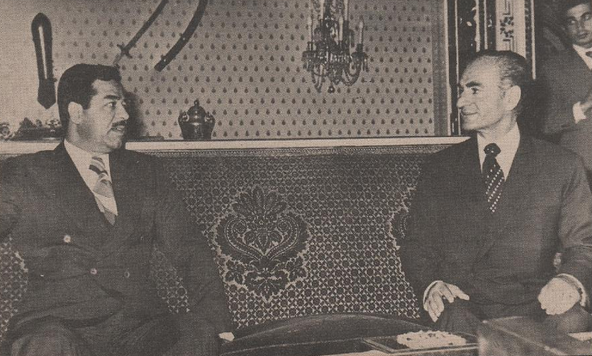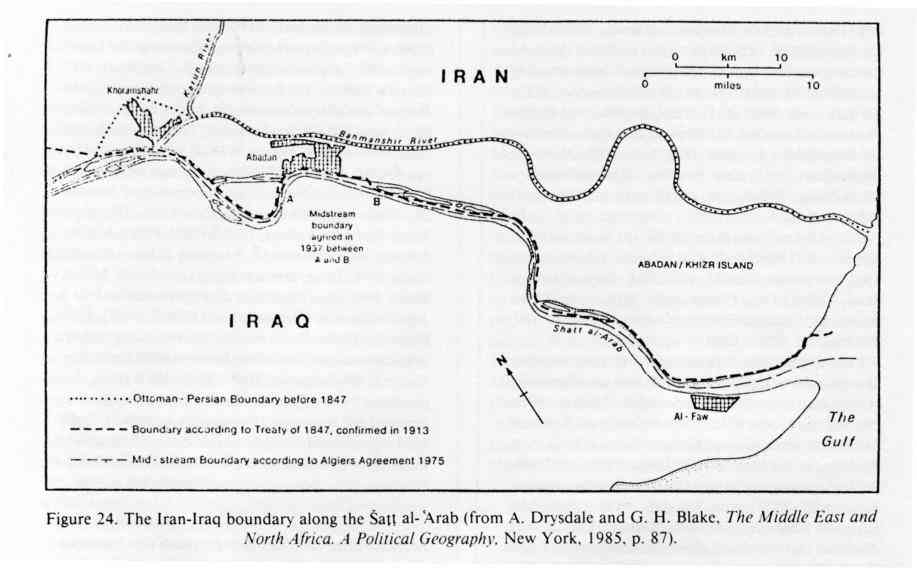
The Algiers Agreement is an agreement signed between Iraq and Iran on March 6, 1975 between the then Iraqi Vice President Saddam Hussein and the Shah of Iran Muhammad Reza Pahlavi and under the supervision of the then Algerian President Houari Boumediene.
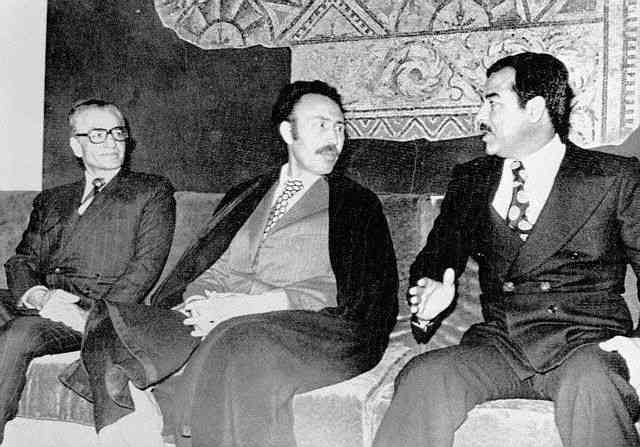
One of the issues that caused many conflicts in the history of Iraq was Iraq's borders with Iran. In 1937, when Iraq was under British control, an agreement was signed that considers that a certain point in the Shatt al-Arab other than the bottom line is the maritime border between Iraq and Iran, but successive governments in Iran rejected this border demarcation and considered it an "imperialist creation" and Iran considered the point of the bottom line in Shatt al-Arab Which was agreed upon in 1913 between Iran and the Ottomans as the official borders and the point of the bottom line is the point where the stroke is the most severe decline. In 1969, Iraq informed the Iranian government that the entire Shatt al-Arab is Iraqi waters and did not recognize the idea of the bottom line.
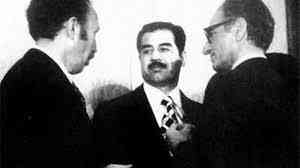
In 1975 for the purpose of suppressing the armed conflict of the Kurds led by Mustafa Barzani, who was supported by the Shah of Iran, Mohammad Reza Pahlavi, Iraq signed the Algiers Agreement with Iran, and the bottom line point was agreed as a border between the two countries, but Saddam Hussein canceled this agreement in 1980 after the fall of the Shah’s rule and the arrival of Khomeini To power, which sparked the first Gulf War.
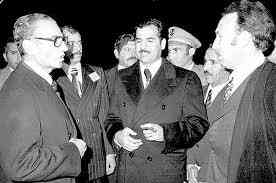
Agreement terms :-
- Final planning of the land borders of the two countries, based on the Constantinople Protocol of 1913 and minutes of the Boundary Commission of 1914.
- Define the river boundaries according to the talc line.
- Each of the two countries to restore security and mutual trust along their common borders and commitment to strict and effective control over these borders in order to put a final end to all infiltrations of a subversive nature from where they came.
Historical background to the agreement before its cancellation :-
After the advent of the new Iranian government led by Khomeini, they assisted the Kurdish rebellion in northern Iraq, as after the death of Mullah Mustafa in Washington, the Iranian regime provided aid to the leadership of the Kurdish rebellion and made Iranian territory a starting point for the Kurdish rebel forces inside the Iraqi border, and Iran for the period from June to September 1980, with about 187 military violations and assaults, and American 175 mm artillery was used to bomb the cities of Khanaqin and Mandali, which departed from Iraqi territory, which must be returned under the Algiers Agreement to Iraq.
Thus, the Iranian government has violated the elements of the comprehensive settlement contained in the Algiers Agreement and canceled it on its side. Therefore, the Iraqi government decided to consider the aforementioned agreement and the subsequent agreements it relied upon to be canceled by Iraq and demanded that Iran recognize the sovereignty of Iraq over its lands and waters as was the case before the Algiers Agreement Whereas, the Revolutionary Command Council decided with the letter announced by Saddam Hussein on September 17, 1980 during the session of the National Assembly to cancel the agreement.
In fact, the Algerian agreement was canceled from the Iranian side, and we find that it already canceled it before Iraq, and it does not recognize it. The Iranian central government does not adhere to the Algiers Agreement. On September 15, 1980, General Falahi, the assistant chief of staff of the Iranian army, said on Iranian television and radio in Persian and Arabic that Iran does not recognize the Algiers Agreement and that Zain al-Qaws and Saif Saad are Iranian regions, as well as Shatt al-Arab.
Abu al-Hasan Bani Sadr, President of the Republic of Iran, made a statement to Agence France-Presse ( PRESS ) on September 19, 1980 in which he said: (On the political level, Iran did not implement the Algiers Agreement signed in 1975 and that the Shah’s regime itself did not implement it).
The Iranian army, before Iraq canceled the Algiers Agreement, moved towards the Iraqi borders, and issued four official military communications, including Communication No. 3 on September 19, 1980, by Iran's recognition of the use of the Air Force, and in Communication No. 4 on September 19, 1980, where the Iranians boasted to set fire to oil fields A box in Iraq, as the Iranian artillery threw fire at the civil aircraft of British and French airlines that were intending to land at Basra Airport. Iran also closed the Shatt al-Arab in the face of foreign shipping.The Iranian interference in the internal affairs of Iraq has reached a high level on all Iranian levels, starting with Khomeini and passing through the political, religious and military authorities who demanded to change the political system in Iraq and the use of weapons to achieve this and the establishment of political organizations under religious cover that used terrorism to carry out acts against the Iraqi people and its government departments.
After the cease-fire between Iraq and Iran, which entered into force on August 8, 1988, Iraq agreed, in accordance with the Security Council Resolution issued on August 28, 1980, to return to the negotiating table for the purpose of developing a new agreement regulating the border and security relationship between them.

